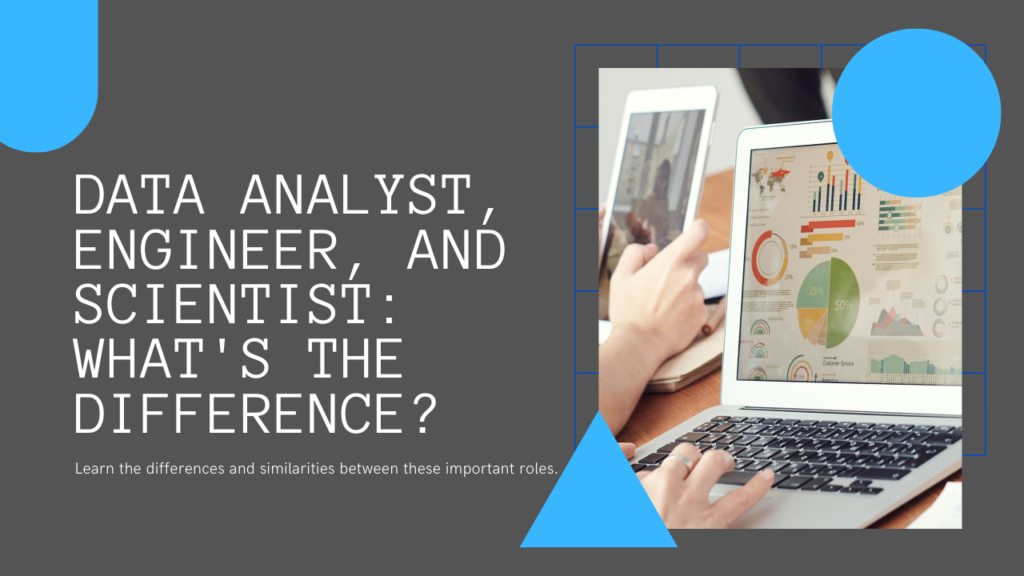
When it comes to the world of data, there is a difference between data analyst, data engineer, and data scientist. While these roles may seem similar on the surface, they each have distinct responsibilities, skillsets, and educational requirements. In this article and based on my experience as a data engineer, we will, briefly, explore the difference between these three roles and shed light on the education and skills needed for each one.
Data Analyst
A data analyst is responsible for gathering, organizing, and analyzing large sets of data to identify trends, patterns, and insights. He/she works with various tools and technologies to clean and transform data, and then use statistical techniques to interpret and present their findings. Data analyst plays a crucial role in helping organizations make data-driven decisions.
To become a data analyst, a bachelor’s degree in a relevant field such as mathematics, statistics, economics, or computer science is typically required. Strong analytical and problem-solving skills are essential, along with proficiency in programming languages like SQL and Python. Additionally, data analyst should have a good understanding of data visualization tools and techniques such as Tableau, Excel, Grafana, etc… to effectively communicate their insights.
Data Engineer
A data engineer focuses on the development and maintenance of the infrastructure and systems that enable the storage, processing, and retrieval of large amounts of data. He/she is responsible for designing and implementing databases, data pipelines, and ETL (Extract, Transform, Load) processes. Data engineer works closely with data analyst and data scientist to ensure that the data is accessible and in the right format for analysis.
To pursue a career as a data engineer, a bachelor’s degree in computer science or a related field is typically required. Strong programming skills, particularly in languages like Python and Java, are essential. Data engineer should also have a good understanding of database management systems, cloud technologies, and big data frameworks like Hadoop and Spark. Additionally, knowledge of data modeling and data warehousing concepts is beneficial and can set you apart in the hiring process.
Data Scientist
A data scientist is responsible for using advanced statistical and machine learning techniques to extract insights and build predictive models from complex and large datasets. He/she works on solving complex business problems and is involved in all stages of the data analysis process, from data collection and cleaning to model development and evaluation.
Education requirements for data scientist are typically more advanced, with many employers seeking candidates with a master’s or Ph.D. degree in a field such as statistics, mathematics, computer science, or a related discipline. Strong programming skills in languages like Python or R are essential, as well as a solid understanding of machine learning algorithms and statistical techniques. Data scientist should also have experience with data visualization tools and have strong problem-solving and critical thinking abilities.
Conclusion
In summary, while The Difference Between Data Analyst, Data Engineer, and Data Scientist seems to be indistinguishable since they all work with data, their roles and responsibilities differ significantly. Data analyst focuses on analyzing and interpreting data, data engineer builds and maintains data infrastructure, and data scientist applies advanced techniques to extract insights and build models. Pursuing a career in any of these fields requires a combination of education, technical skills, and domain knowledge. As the field of data continues to evolve, these roles will continue to be in high demand, making them exciting and rewarding career paths for those interested in working with data.
